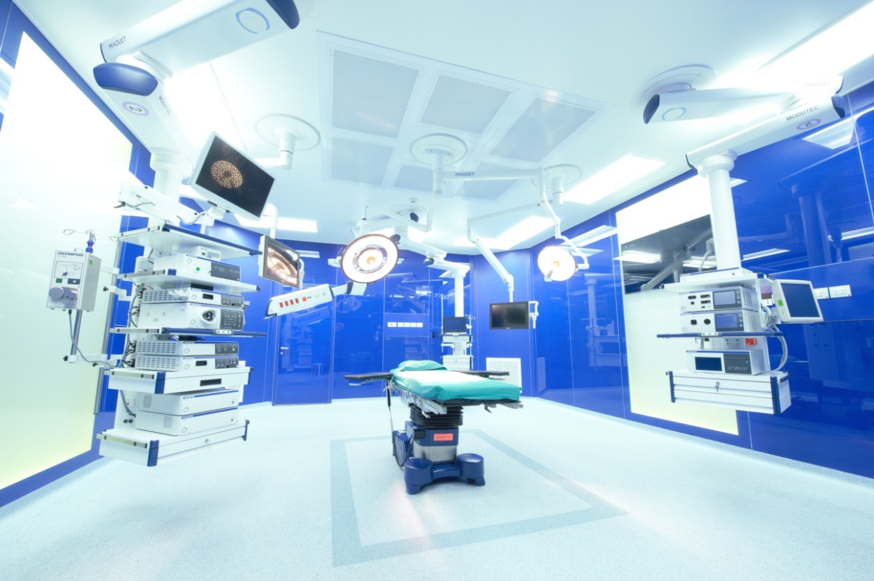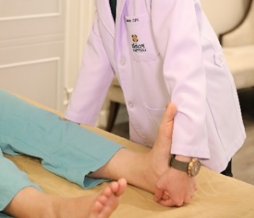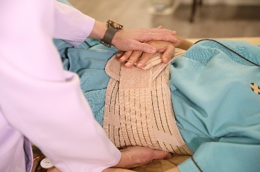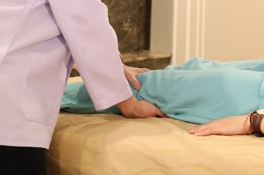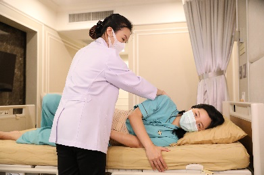Personal protective equipment (PPE)
1. There is a limit on the number of medical personnel allowed into the operating theatre during procedures, ensuring that only essential staff are in attendance.
2. All medical staff present in the operating theatre, including surgeons, scrub nurses, anesthesiologists, and nurses, must wear a surgical gown, N95 face mask, latex gloves, a disposable hair cover or hood, face shield or goggles, and shoe covers (or special boots if shoe covers are unavailable).
3. Patients must wear a mask when conscious and breathing independently.
Preparing the operating theater
1. Only essential items are brought into the operating theatre, such as operating equipment, essential tools, medical supplies (sutures, gauze, cloth), and syringe pumps. All medical supplies are disposable.
2. The bed has a paper wrap applied using a special piece of machinery, with monitors and other devices wrapped in plastic film that is then disposed of into red trash cans (labelled as infectious material) once the procedure is over.
3. The door is only opened when necessary and sliding doors are operated appropriately. Air changes at least 15 times/hour.
Cleaning procedures
1. Operating theatre air conditioning is left on for 1 – 2 hours following each procedure. Additionally, 30 minutes after the operation has been completed, a cleaner wearing full PPE enters the room to clean the bed, machinery, and all equipment using CaviWipes.
2. Medical staff take a shower following each procedure.
3. PPE is disposed of into the operating theater’s red trash cans, hands are cleaned using alcohol gel, and N95 face masks and face shields are thoroughly disinfected so that they may be used again.
Post-surgery patient care
1. Initial post-surgery patient care takes place in the operating theatre instead of in patient recovery rooms.
2. Nursing staff in the operating theatre remove their PPE when transferring patients, except for their disposable hair cover or hood, N95 face mask, face shield, waterproof gown, latex gloves, and shoe covers or special boots.


